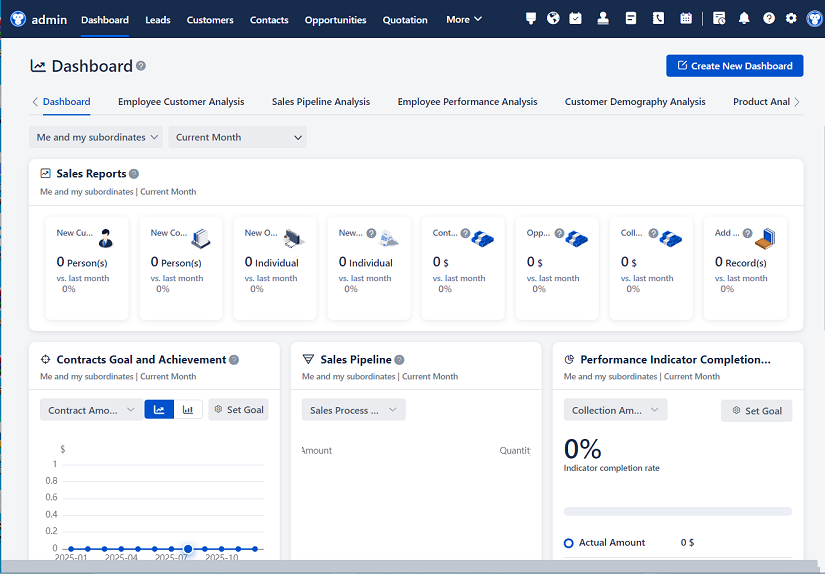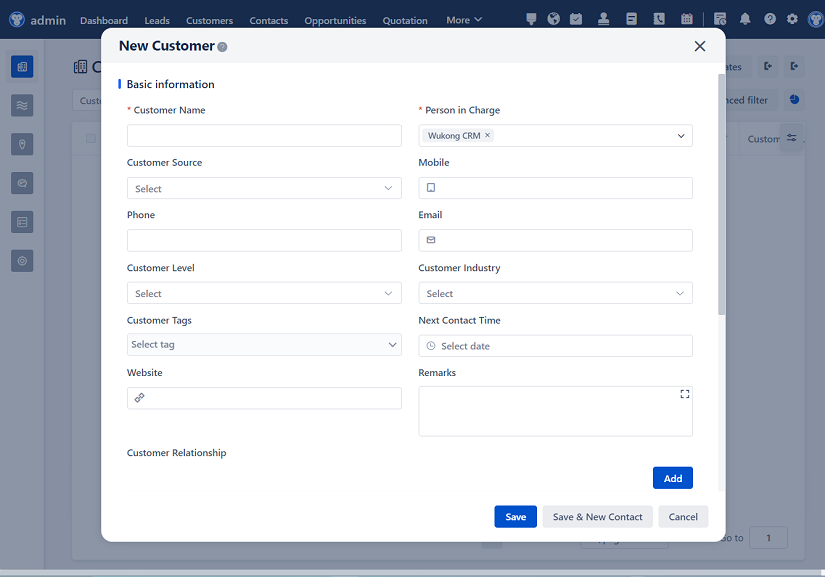
△Click on the top right corner to try Wukong CRM for free
Hey there! So, you're interested in customer management data analysis, huh? It's a pretty big deal these days, and I get why. Businesses are always looking for ways to better understand their customers, right? Well, let’s dive into it.

First off, what exactly is customer management data analysis? It's basically about using all the information we have on our customers to make smarter decisions. You know, like figuring out what they like, what they don’t like, and how we can keep them happy. It’s kind of like being a detective, but instead of solving crimes, you’re solving the mystery of what makes your customers tick.
Now, why is this so important? Well, think about it. If you know what your customers want, you can give it to them, and that means they’ll stick around. And if they stick around, your business grows. Simple as that. Plus, it helps you save money because you’re not just throwing darts in the dark, hoping something sticks. You’re making informed choices based on real data.
So, how do we actually go about doing this? First, you need to collect the data. This can come from a bunch of different places. Maybe you’ve got a website, and you’re tracking how people use it. Or maybe you’re sending out surveys to get feedback. Even social media can be a goldmine of information. The key is to gather as much relevant data as you can, but also to make sure it’s good quality. Garbage in, garbage out, as they say.
Once you’ve got the data, the next step is to clean it up. This means getting rid of any duplicates, fixing errors, and making sure everything is consistent. It’s a bit like organizing your closet. You take everything out, sort through it, and put it back in a way that makes sense. Trust me, it’s worth the effort. Clean data is the foundation of good analysis.

Okay, so now you’ve got your data all nice and tidy. What’s next? Time to analyze it! There are a bunch of tools out there that can help with this. Some are simple, like Excel, and some are more advanced, like Tableau or Power BI. The goal here is to find patterns and insights. For example, you might notice that a certain group of customers tends to buy more during a specific time of year. Or maybe you see that a particular product is getting a lot of negative reviews. These kinds of insights can be really valuable.
But wait, there’s more! Once you’ve got your insights, you need to do something with them. This is where the real magic happens. You might decide to run a special promotion for that group of customers who buy more during a certain time. Or you might work on improving that product that’s getting bad reviews. The point is, you’re taking action based on what the data is telling you, and that’s what makes all the difference.
Now, I know what you’re thinking: “This all sounds great, but how do I get started?” Well, first things first, you need to set clear goals. What do you want to achieve with your customer management data analysis? Do you want to increase sales? Improve customer satisfaction? Reduce churn? Whatever it is, write it down. Having a clear goal will help guide your efforts.
Next, you need to figure out what data you already have and what data you need to collect. Take an inventory of your existing data sources. Are you using a CRM system? Do you have a loyalty program? What about your e-commerce platform? Make a list and start thinking about how you can integrate all this data into one place. It’s a bit like putting together a puzzle, but once you’ve got all the pieces, the picture becomes much clearer.
And don’t forget about the tools. As I mentioned earlier, there are a lot of options out there. Some are free, and some cost money. The key is to find something that fits your needs and your budget. If you’re just starting out, you might want to try something simple like Google Analytics or Excel. As you get more comfortable, you can move on to more advanced tools.

Another thing to keep in mind is that data analysis is an ongoing process. It’s not a one-and-done kind of thing. You need to keep collecting data, analyzing it, and making adjustments. It’s like tending to a garden. You plant the seeds, water them, and then you need to keep an eye on them to make sure they’re growing properly. If you see a weed, you pull it out. If you see a flower that’s not doing well, you give it some extra care. The same goes for your data. You need to keep nurturing it and making sure it’s working for you.
One last thing I want to mention is the importance of communication. Data analysis isn’t just about numbers and charts; it’s about people. You need to be able to explain your findings to others in a way that makes sense. This could be your boss, your team, or even your customers. Use visuals, tell stories, and make it relatable. The more people understand, the more likely they are to support your efforts.
Alright, I think that covers the basics. But before I wrap up, I want to leave you with a few questions to think about:
- What are some of the biggest challenges you face when it comes to customer management data analysis?
- How do you ensure the data you collect is both accurate and relevant?
- What tools do you currently use for data analysis, and are they meeting your needs?
- How do you communicate the insights you gain from data analysis to your team and stakeholders?
- What steps can you take to make sure your data analysis efforts are aligned with your business goals?
I hope this helps, and if you have any more questions, feel free to ask. Good luck with your customer management data analysis journey!

Related links:
Free trial of CRM
Understand CRM system
AI CRM Systems

△Click on the top right corner to try Wukong CRM for free